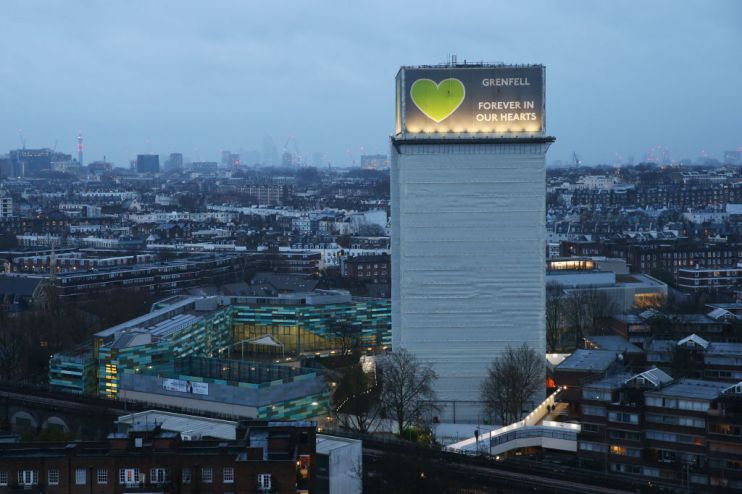Michael Gove has finally entered the cladding fray, but the fight isn’t over

Among the political shambles of this week, something remarkable happened: someone stepped in to say a word or two about how to fix the cladding crisis. This someone was the Secretary of State for Levelling up, Housing and Communities, Michael Gove. His intervention was met with relief that an issue which has languished on the political backburner has finally been acknowledged. For leaseholders stuck in unsafe and worthless buildings, it was a sign of hope. For builders, at least they knew what they were facing.
Despite the forceful rhetoric, the reforms are vague and the timing is left up in the air. Gove tore up the bill for leaseholders living in developments over 11 metres high. Instead, he dumped the cheque at the door of housebuilders, who will have to find the funds in the next two months – or face consequences. “We are coming for you”, Gove warned them, ominously. The cost of remediating unsafe cladding on buildings between 11 to 18 metres high is estimated at £4bn.
But if it ends up taking years to patch up the fire hazards, people won’t be able to sell their properties: no one will want to buy them. Until a building’s cladding is completely removed, the value of the flats stays put at next to nothing. It would take an unprecedented level of intervention to change this.
Post-Grenfell, the plague of unsafe cladding in housing developments was thrown into harsh relief. For people who worked desperately hard to get onto the housing ladder, their properties became worthless overnight.
Gove has pledged to change the way properties are valued, by loosening the form used by surveyors which determines the price of a home based on the safety of the building. The current system is disjointed, with buildings often winding up with more than one valuation or with an outdated one that gives a lower value to the property than what it actually deserves. In typical Gove-fashion, he wants to scrap the mess of paper while pumping money to fix the fire hazards. This piecemeal approach is sensible. It’s a way to make these long forgotten properties sellable and buyable.
But according to Mary-Anne Bowring, group managing director at property consultant Ringley Group, there’s still considerable uncertainty over the scope of the new measures. At first, it was about almost all inflammable materials – since then it’s been hard to pin down. Those who have some cladding on the building, but aren’t completely enveloped by it, might miss out on the cash cow.
Industry insiders are mutinous at the new proposals. The National Federation of Builders slammed the blame game. “The developer paying for remediation will almost certainly not have been responsible for the cladding put on the property – most of which was retrofitted long after construction,” a spokesperson said. The fury is understandable. At the time, the cladding was up to industry standards, hence the widescale use of it. Developers see the new rules as retroactive punishment for someone else’s crime.
Many have questioned the rationale behind the rules: “Where’s the fairness in penalising housebuilders and developers now for faults in the system at the time?” co-head of housing at law firm Addelshaw Goddard, Peter Hardy asked. “Penalising housebuilders now will de-capitalise them. They will be less able to build new buildings, and the housing crisis will only get worse.”
Builders are unlikely to capitulate that easily and hand over the £4bn. This sets up the stage for a messy fight between Gove and industry, at a time when the Conservative party is struggling to win the support of business leaders. If the industry doesn’t willingly pay, Gove could force their hand. He has warned that this could happen through a tax on developers and development. Alternatively, industry insiders expect a withdrawal of benefits like the Help to Buy subsidiary.
The reality is that the government will also have to chip in, paying £5bn for the removal and replacement of cladding for all leaseholders in buildings 18 metres or higher. It remains unclear, though, where this money will come from. The tension between Gove’s department and the Treasury is crystal clear. The Treasury doesn’t want to pay for cladding. After all, it is more politically convenient to pay for shiny things anew than to fix old problems.
Behind this almighty standoff is the leaseholders who will have to live with the consequences. As campaigners pointed out: “Strong words, but then we’ve heard strong words from Ministers many times before”.